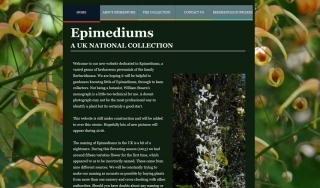Our two friendly builders did much of the heavy work in recently converting the last of the three goldfish ponds into a raised bed for Epimediums etc.. They did most of the hard work of breaking out the bottom with my budget concrete breaker and demolishing the waterlily and marginal plant boxes. The stages were very similar to those already described to you, with the other two ponds.
Over a couple of weeks earlier in the summer Linda and I had removed a large amount of silt from our ‘bridge pond’. This we had placed in one ton bags held up by their lifting straps to steel road-pins. The builders wheel barrowed about one and a half ton bags of this partially dried material to put over the gravel in the new bed.
In addition they made a Yorkstone paved area near the bridge pond. Some of the excavated soil was also barrowed up and put over the silt.
We dug in a generous addition of our own garden compost and peat to the top spit for planting. This bed at the moment is more sunny than other places we have been growing Epimediums.
We are experimenting with more deciduous, Japanese varieties in the hopes that they will be happy. Three young Japanese Maples have been planted to eventually provide shade and to continue a theme through the three pond/bed feature. As somewhat unusual companion plants we have also planted in a few Dieramas to give an additional season of flowering. Along the edges we have planted a good number of Cyclamen coum bought at half price in our local Wyevale garden centre, in their autumn sale.
The whole concept is unlikely to work well in the long term, as when the maples grow they will probably make the bed too shady for the Dieramas, but time will tell. The bed may also be not ideal for the cyclamen as it may be too moisture retentive in the summer for the Cyclamen, we will see.
To make less work for ourselves we have drilled out the fibre-glassed, drainage hole bungs, in our four largest ceramic waterlily pots and planted each one up with a smaller growing Japanese Maples, and three Epimediums and Cyclamen coums. These water pots needed emptying each autumn and turning upside down to prevent the water from turning to ice and bursting them.

